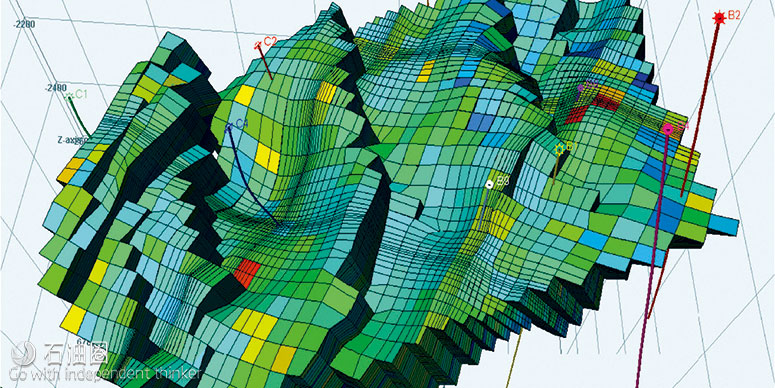Schlumberger announced today at the 2016 SPE Annual Technical Conference and Exhibition the release of GeoTesting geology-based well test design and interpretation services.
GeoTesting services, built in the Petrel* E&P software platform, maximize the value of well tests by integrating geological and geophysical models with dynamic well test data in a shared earth model for more accurate interpretation compared with conventional analysis limited to geometrical models.
GeoTesting geology-based well test design and interpretation services maximize the value of well tests by integrating G&G models with dynamic well test data—helping you increase certainty in reservoir models, improve production forecasting, determine reservoir connectivity, and identify sweet spots.
Design and interpretation using GeoTesting services, a plug-in for the Petrel E&P software platform, is performed in a shared earth model for greater certainty compared with conventional analysis limited to geometrical models.
GeoTesting services can be applied to conventional, unconventional, and hydraulically or naturally fractured reservoirs with multiple wells and multiple layers.
Optimize test design using available G&G data
Enabled by the Petrel* E&P software platform, GeoTesting services allow geomodelers and engineers to perform G&G-centered design and interpretation in a shared earth model for greater certainty compared with conventional analysis limited to geometrical models. Pressure derivative plots are also provided within the simulation environment using the software’s advanced functionality.
During the test design process, GeoTesting services are used to optimize test design for characterizing geological features of interest and providing alternative test options. Uncertainty in the geological model is included during the design process to ensure optimal data quality as well as deliver analysis that accurately reflects the reservoir.
Maximize the value of your well test
GeoTesting services enable well test information to be used to its full extent, providing seamless integration with the reservoir models and geologic information. This is unlike conventional interpretations, which are generally performed independently from the valuable G&G information. Interpretation of complex tests is easily performed, providing deeper and more accurate insight into your reservoirs and maximizing the value of dynamic measurement services.
Understand complex environments
Design and interpret well tests with confidence in fractured environments with the industry-leading naturally fractured reservoir simulator. Model your fractures explicitly and calibrate with pressure transient tests to determine which fractures matter and which do not.
Automate reservoir model updates
Advanced simulation technology is used to match the well test data by automatically updating the reservoir model properties. The built-in optimizer allows complete automation in the matching process without the need for manual updates to the reservoir model properties.
APPLICATIONS
Conventional, unconventional, and hydraulically or naturally fractured reservoirs with multiple wells and multiple layers.
BENEFITS
1.Optimizes test design to ensure successful reservoir characterization;
2.Validates and confirms reservoir models using dynamic measurements;
3.Improves accuracy in production forecasting by reducing uncertainty.
FEATURES
1.Calibrates reservoir models by integrating well test data into reservoir simulation models;
2.Enhances automation during the interpretation process;
3.Delivers a seamless geological and geophysical (G&G) interpretation process.
“GeoTesting services bring a new level of certainty to reservoir characterization with optimized well test designs that validate and calibrate reservoir models using dynamic measurements,” said Wallace Pescarini, president, Testing Services, Schlumberger. “With high-quality data and analysis representative of the reservoir, customers can vastly improve production forecasting, determine reservoir connectivity and identify sweet spots.”
The Petrel GeoTesting plug-in features Global Sensitivity Analysis designed for targeting geological features of interest and incorporating uncertainty in the geological model during well test design and execution—maximizing confidence in the data while minimizing well test duration and cost.
New grid-based inversion technology automatically calibrates reservoir models with dynamic well test data for direct integration into the reservoir model, enabling more accurate reservoir characterization. In addition, the naturally fractured reservoir pressure transient simulator provides new insight into the complex behavior of transients and the matrix–fracture interaction, which is critical for field management in carbonates and unconventional reservoirs.
Operating in the Norwegian Barents Sea, OMV used GeoTesting services to characterize a geologically complex reservoir, which presented many challenges including proximity to nearby faults, oil/water contact, uncertainty in fault conductivities, permeability and anisotropy. Success was achieved using GeoTesting services to optimize the well test design and calibrate the reservoir model with dynamic well test data—establishing confidence in the final model and confirming reservoir connectivity.

 石油圈
石油圈
